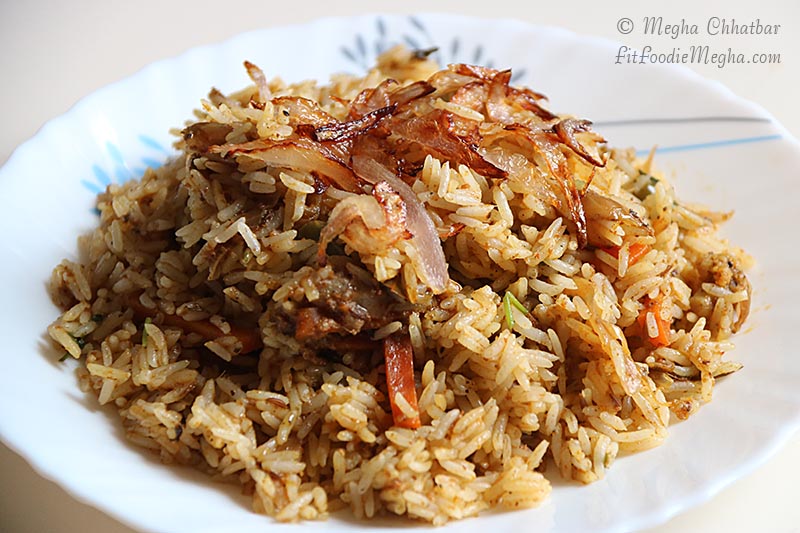Biryani, a dish synonymous with celebration and rich culinary heritage, is more than just a meal; it's an experience.
World Biryani Day, celebrated annually on the first Sunday of July, is a relatively new but rapidly growing phenomenon that perfectly encapsulates the global adoration for this iconic dish. It's a day dedicated to acknowledging Biryani's rich cultural legacy, its diverse regional expressions, and its immense popularity across the world. From home cooks experimenting with new recipes to renowned chefs showcasing their signature Biryanis, the day sees a flurry of activities. Food enthusiasts organize Biryani cook-offs, share their favorite recipes on social media, and gather with family and friends to savor this beloved meal. Restaurants often feature special Biryani menus, offering discounts and promoting their unique renditions.
While the exact origins of Biryani are debated, most culinary historians trace its roots back to the Mughal Empire in India. The word "Biryani" is believed to be derived from the Persian word "Birian," meaning "fried before cooking," or "Birinj," the Persian word for rice.
Over centuries, Biryani transcended the royal kitchens and adapted to local palates and ingredients.
While often associated with meat, the vegetarian variations of Biryani are equally delightful and incredibly popular, especially in a country like India where vegetarianism is widespread.
Veg Biryani Recipe: A Step-by-Step Guide
Creating a delicious Veg Biryani at home is a rewarding experience. Here's a simple recipe to guide you:
Ingredients:
For the Rice:
- 2 cups Basmati rice, washed and soaked for 30 minutes
- 4 cups water
- 2-3 green cardamoms
- 2-3 cloves
- 1-inch cinnamon stick
- 1 bay leaf
- salt as per taste
- 1 tsp oil or ghee
For the Vegetable Gravy:
- 2 tbsp ghee or oil
- 1 large onion, thinly sliced and fried until golden (for garnish and gravy)
- 1 large onion, finely chopped
- 1 tbsp ginger-garlic paste
- 1 cup mixed vegetables (carrots, beans, peas, potatoes, cauliflower florets), chopped
- 1/2 cup paneer (Indian cottage cheese), cubed (optional)
- 1/2 cup curd (yogurt), whisked
- 1/4 cup chopped fresh mint leaves
- 1/4 cup chopped fresh coriander leaves
- 1 green chili, slit (adjust to taste)
- Whole Spices: 1 tsp cumin seeds, 2 green cardamoms, 2 cloves, 1 small cinnamon stick, 1 bay leaf
- Powdered Spices: 1 tsp red chili powder, 1/2 tsp turmeric powder, 1 tbsp Biryani masala, 1/2 tsp garam masala, salt to taste
For Layering and Garnish:
- A pinch of saffron strands soaked in 2 tbsp warm milk
- Fried onions (from above)
- Fresh coriander leaves, chopped
- 2 tbsp ghee
Instructions:
Cook the Rice: In a large pot, bring water to a boil with whole spices, salt, and oil/ghee. Add the soaked Basmati rice and cook until 70% done (the grains should still have a slight bite). Drain immediately and spread on a plate to cool and prevent sticking.
Prepare the Fried Onions: Heat ghee/oil in a pan and fry thinly sliced onions until golden brown and crispy.
Remove and set aside. Prepare the Vegetable Gravy: In the same pan, add a little more ghee/oil if needed. Add whole spices and let them crackle. Add chopped onions and sauté until translucent. Add ginger-garlic paste and green chili, cook for a minute until aromatic.
Add the mixed vegetables and cook for 5-7 minutes until slightly tender. If using paneer, add it now.
Reduce heat, add whisked curd and all the powdered spices (red chili, turmeric, Biryani masala, garam masala, salt). Mix well and cook for 5-7 minutes until the oil separates. Stir in half of the chopped mint and coriander leaves.
Layer the Biryani: In a heavy-bottomed pot or a pressure cooker, grease the bottom with a little ghee. Spread half of the cooked rice as the first layer.
Evenly spread the prepared vegetable gravy over the rice.
Top with the remaining rice.
Sprinkle with half of the fried onions, remaining mint and coriander leaves, and drizzle with the saffron milk and remaining ghee.
Dum Cooking: Cover the pot tightly with a lid (you can seal the edges with dough for a perfect "dum" effect).
Cook on low heat for 15-20 minutes. This allows the flavors to meld beautifully.
Serve: Gently fluff the Biryani with a fork before serving hot with raita (yogurt dip) or salan.
Whether it's a grand wedding feast, a festive celebration, or a simple family dinner, Biryani continues to be a centerpiece. Its ability to evoke warmth, comfort, and sheer culinary delight makes it a timeless classic. So, the next time you crave something truly special, embark on your own Biryani adventure – whether cooking it from scratch or indulging in your favorite restaurant's offering. The aromatic allure of Biryani is sure to leave you wanting more.












Comments
Post a Comment